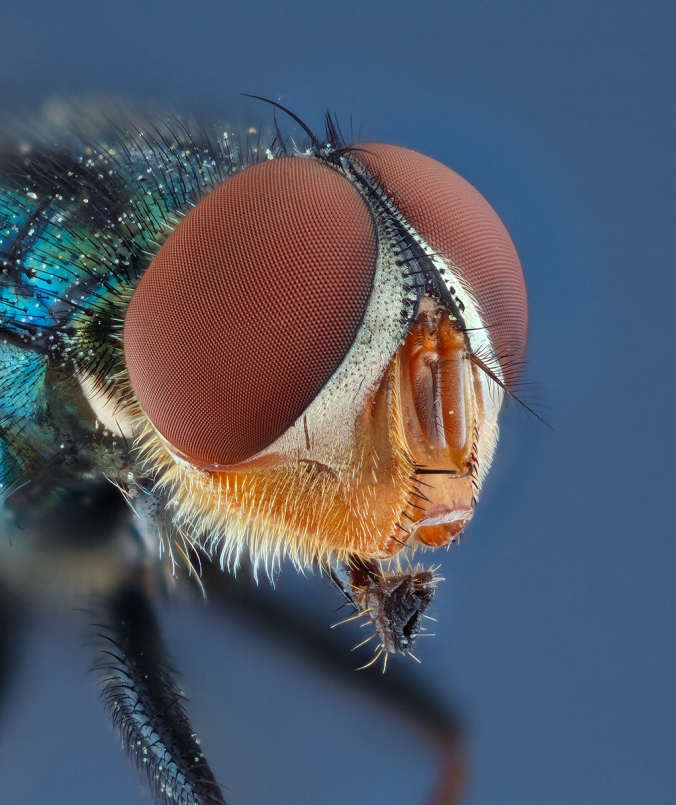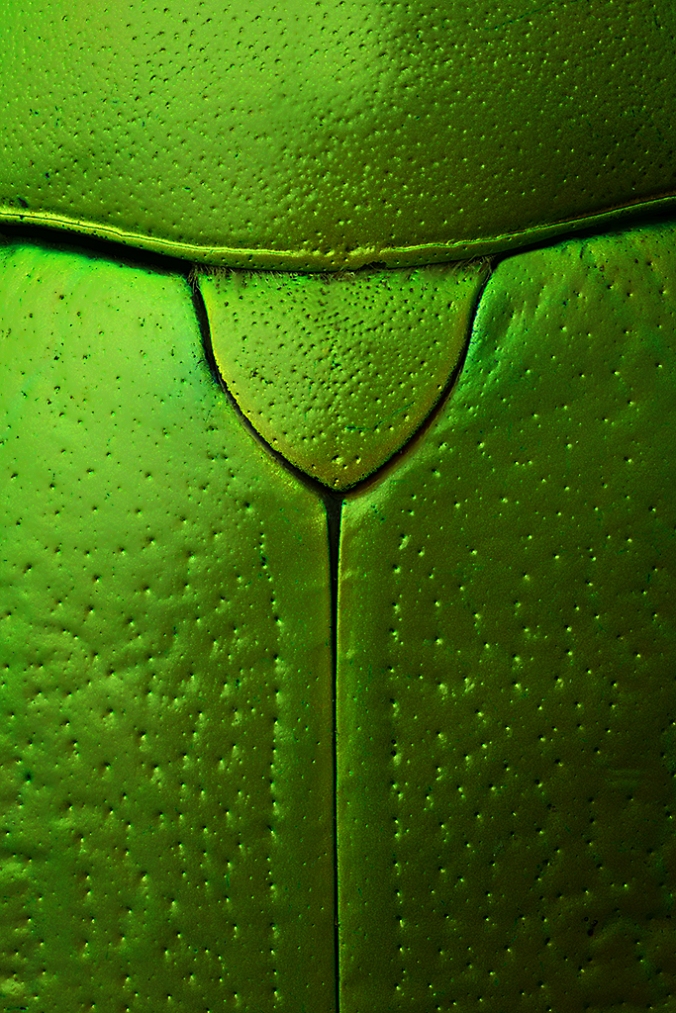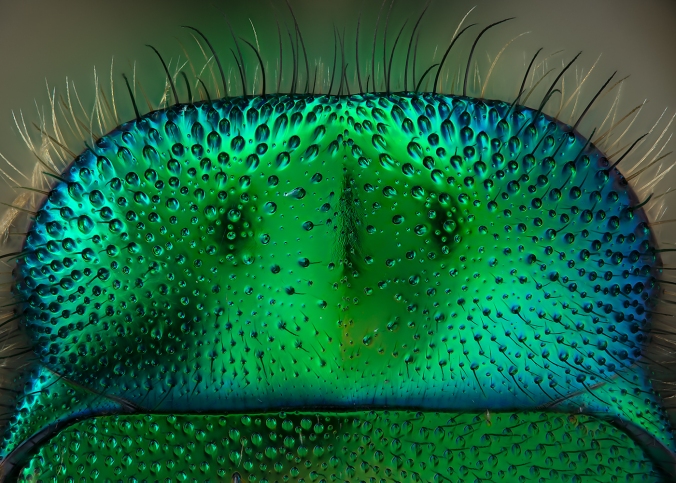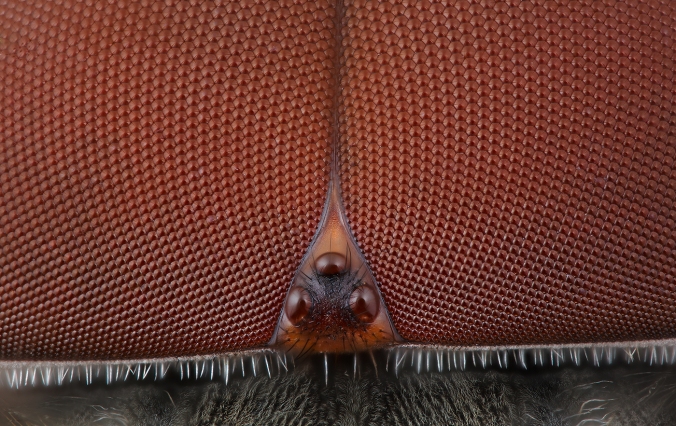Author: Bruce Taubert
For whatever reason I have become obsessed with taking macro and micro photographs of bugs. Beetles, files, wasps, bees, stink bugs, moths, butterflies, and whatever other bugs in Arizona and around the world. Bugs are cool! They have compound eyes, colorful exteriors, antennae, exoskeletons with sharp spines or hairs, scales like a fish, and many endearing body forms.
To take extreme macro/micro images of bugs I have purchased some types of photographic equipment that one would not normally find in a photographer’s bag. All the cameras I own are adequate to take wonderful macro images, but it is the lenses that lack the magnification power to get the job done. My first super macro lens purchase was the Canon MP-65 f/2.8 1X-5X zoom lens. This unique lens does not zoom from wide to telephoto but zooms to different magnifications. By moving the “non-focusing ring” the lens zooms from 1X to 5X without the need for extension tubes, teleconverters, diopter lenses, or the like. Very easy to use when it comes to changing the level of magnification.
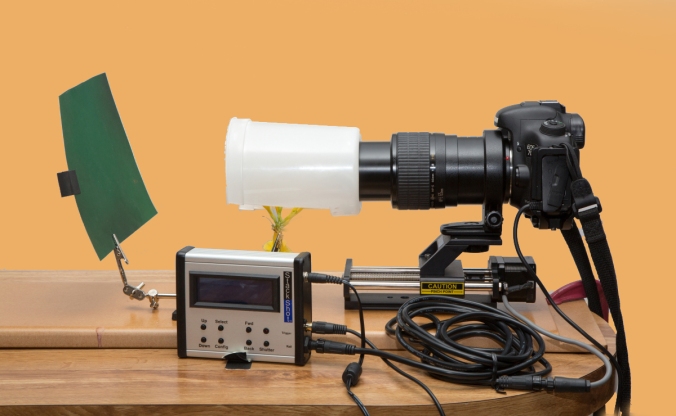
Cognisys “StackShot” attached to the automatic focusing rail. The camera is the Canon 7D Mark II with a Canon MP-E-65mm f/2.8 1-5X. The diffuser is a tapioca cut. In the set-up there would either be a LED light or two flashes.
When I want to go past the 5X world I must resort to purchasing equipment normally found in the research laboratory and, not in the camera bag. For 10X magnification I have purchased a Mitutoyo microscope objective. To allow me to use my digital camera and not a microscope I place a 70-200mm lens on the camera and use an adapter to place the microscope objective on the end of the camera lens. Not difficult to do and the cost of objective is less than the cost of a quality macro lens, and there are more inexpensive options than the Mitutoyo lens I have.
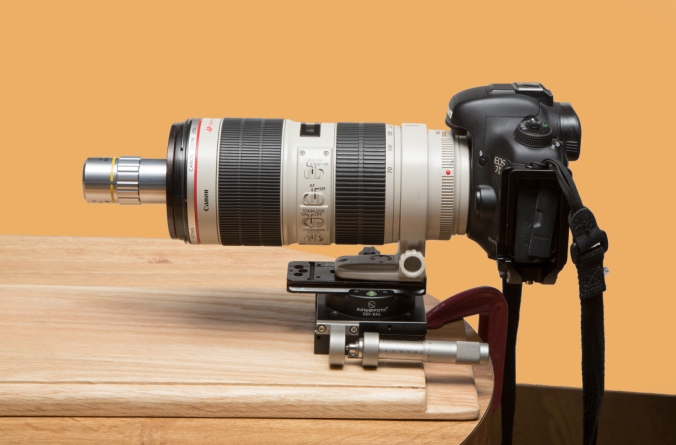
Mitutoyo 10X microscope objective mounted on a Canon 70-200 mm f/2.8 lens attched to a Canon 7D Mark II camera. This set-up gives a 16X magnification.
From here the only other relatively costly item is a focusing rail. When taking images at large magnifications, it is necessary to use focus stacking. Focus stacking is a mechanism by which the computer puts several images taken at different focal distances together resulting in a final, single image that has more depth-of-field than possible by any other process. For smaller magnifications I may only take 10 images for stacking but at higher magnifications I take 200 or more images. The focusing rail allows me to move the camera in very small increments and makes it easy to take the multiple images necessary for stacking. To make life easier I purchased an automated focusing rail.
The rest of the equipment is easy and cheap. I use either an empty tapioca container, plastic cutting board, printing paper, or even a ping pong ball for diffusion. Camera flashes or LED lights provide the illumination and the bugs are free.
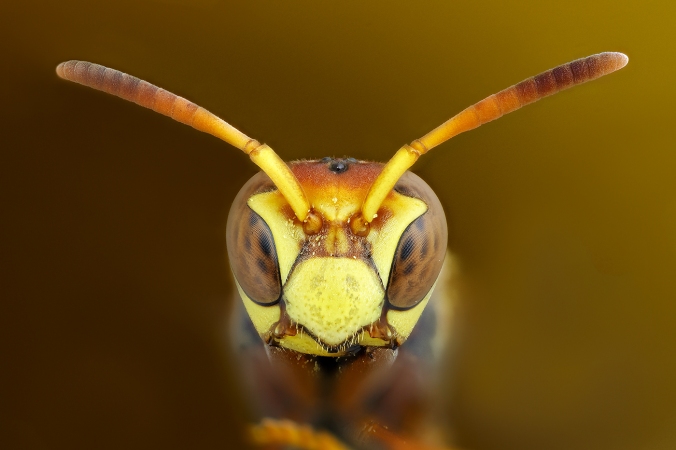
This sinister looking portrait of a wasp face was focused stacked from 44 images taken with the Canon MP-65 lens.
Not only are the images, in my mind, beautiful they represent forms that are unimaginable without having a photograph to view. With this level of magnification, we can better appreciate the natural patterns of even the most obscure creatures. Small bugs that are completely unappreciated become things of beauty, hopefully allowing the viewer to better appreciate them. Even with all the biological experience I have and my love for all things alive (yes Roberta, even Creepy, Crawly Critters) I am forever amazed to see the intricate details these images uncover.
With a little practice and some unique equipment, it is relatively easy to see the smaller things in life. The learning curve is not steep and the equipment not as expensive or exotic as one might imagine.
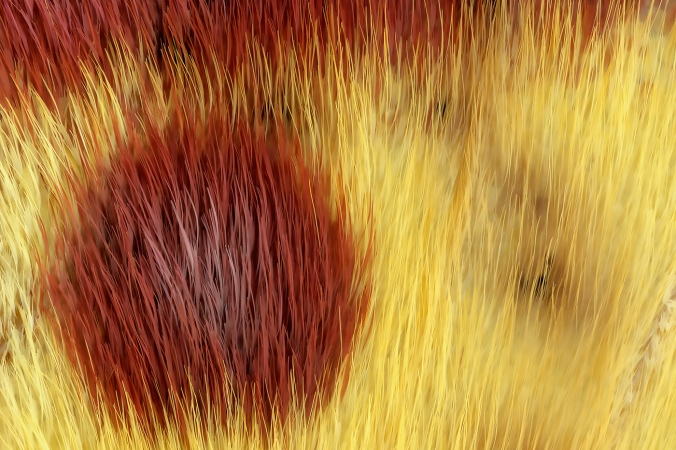
used a Canon MP-65 to capture this image of the beautiful scales on a moths wing.
If this type of photography interests, you I teach macro photography workshops through Arizona Highways PhotoScape’s and I have just written a book with Amy Brooks Horn on The Art of Macro Photography.
Bruce Taubert is an Instructor with Arizona Highways PhotoScapes
View Post on Original Blog
https://blog.ahpw.org/2018/04/21/bugs-are-beautiful/

